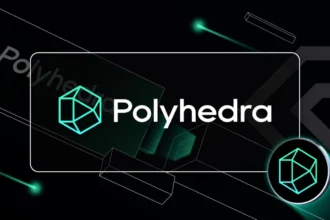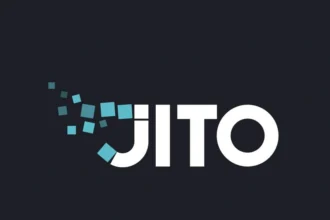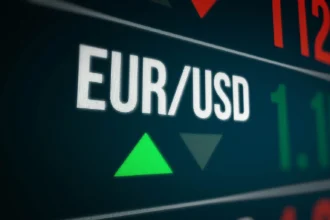The rise of decentralized finance (DeFi) has led to the creation of numerous platforms that enable users to engage in financial activities without intermediaries. One of the most prominent projects in the DeFi ecosystem is Uniswap. As a decentralized exchange (DEX), Uniswap allows users to swap ERC-20 tokens directly from their wallets without relying on centralized exchanges. The platform’s native token, UN (or UNI), plays a crucial role in governance and liquidity provision.
In this article, we will explore Uniswap, provide insights into its current position in the market, discuss its future trends, and analyze the potential price prediction for 2025.
What Is Uniswap (UN)?
Uniswap is a decentralized exchange protocol built on the Ethereum blockchain, primarily designed to allow users to trade ERC-20 tokens. Unlike traditional centralized exchanges (CEX), which rely on order books to match buyers and sellers, Uniswap uses an Automated Market Maker (AMM) system to determine the price of assets.
This model allows liquidity providers (LPs) to deposit their tokens into liquidity pools, where they earn a portion of the trading fees in exchange for providing liquidity. Uniswap’s innovative AMM system eliminates the need for a central order book and enables frictionless and permissionless trading.
The platform’s native governance token, UNI (Uniswap’s token), was introduced in September 2020. UNI holders have the ability to participate in governance decisions regarding the future development of Uniswap. These decisions include voting on proposals for protocol upgrades, fee changes, and other critical platform-related matters.
Key Features of Uniswap
- Decentralization:
Uniswap operates as a fully decentralized platform, allowing anyone to trade ERC-20 tokens without relying on intermediaries. The decentralized nature of the platform means that users maintain full control over their funds. - Automated Market Maker (AMM):
The AMM model eliminates the need for traditional order books by using liquidity pools. Users can trade assets at any time, with prices determined algorithmically based on the supply and demand within the liquidity pools. - Liquidity Pools:
Liquidity providers (LPs) contribute equal amounts of two tokens into a pool. In return, they earn a percentage of the transaction fees generated by the pool. This incentivizes LPs to provide liquidity, making Uniswap highly liquid and efficient. - UNI Token:
The UNI token is the governance token of the Uniswap protocol. Holders of UNI tokens have voting power on proposals that can change the protocol’s future, making it a community-driven project. UNI is also used to reward liquidity providers and incentivize ecosystem growth. - Integration with Ethereum:
Uniswap is built on the Ethereum blockchain, which ensures that it can take advantage of Ethereum’s security and scalability. This also means that Uniswap users can access the wide range of Ethereum-based assets and dApps.
Uniswap’s Impact on the DeFi Ecosystem
Uniswap played a pivotal role in the growth of the DeFi ecosystem. By introducing an AMM model, it removed barriers to entry for users and enabled more efficient token trading. This innovation helped shape the decentralized exchange landscape, inspiring other AMMs and DEXs to follow suit.
Uniswap also enabled the creation of liquidity mining and yield farming opportunities, where users can earn rewards for providing liquidity to various pools. This has resulted in billions of dollars in total value locked (TVL) within the Uniswap protocol, making it one of the largest decentralized exchanges in the world.
Uniswap Price Prediction for 2025
When discussing the price of any cryptocurrency, it is important to consider multiple factors, including technological developments, market trends, and the overall health of the DeFi space. As of now, Uniswap’s UNI token is one of the most prominent DeFi tokens, and it continues to capture the attention of investors, developers, and traders.
Key Drivers for UNI Price in 2025
- Growth of DeFi:
As the DeFi sector continues to expand, Uniswap is poised to benefit from the increased adoption of decentralized financial products. The broader DeFi market’s growth will likely drive demand for Uniswap’s liquidity and governance token, UNI. - Ethereum 2.0 and Layer-2 Solutions:
Ethereum’s upgrade to Ethereum 2.0 and the development of Layer-2 solutions are expected to reduce transaction fees and improve scalability. This will make Uniswap more accessible to users and traders, potentially driving up its usage and value. - Increased Institutional Interest:
As more institutional investors become interested in the DeFi space, Uniswap’s prominence is expected to increase. Institutional capital could flow into the platform, driving up liquidity and demand for the UNI token. - Continued Innovation:
Uniswap’s commitment to continuous innovation, including the recent introduction of Uniswap v3, which introduced features like concentrated liquidity, is likely to keep the platform competitive. The success of new features could significantly impact the price of UNI. - Governance and Ecosystem Expansion:
The governance model of Uniswap, where UNI token holders have voting rights, provides the community with a sense of ownership and control. This decentralized decision-making process may drive long-term value for the platform. Additionally, Uniswap’s expanding ecosystem of liquidity pools and integrations could attract more users, further boosting demand for UNI.
Price Prediction for 2025
Given the factors mentioned above, the price of Uniswap (UNI) in 2025 could experience substantial growth. Some analysts predict that the price of UNI could reach anywhere between $50 to $100 per token by 2025, depending on the evolution of the DeFi market, Ethereum upgrades, and Uniswap’s role in the space.
Future Trends for Uniswap (UN)
- Cross-Chain Integration:
Uniswap could explore cross-chain compatibility, allowing users to swap tokens between different blockchains. This would further increase the utility and accessibility of the platform, attracting users from various blockchain ecosystems. - Layer-2 Integration:
With the rise of Ethereum Layer-2 solutions like Optimism and Arbitrum, Uniswap could see faster and cheaper transactions, which would improve the user experience and drive more liquidity to the platform. - New Features and Updates:
Uniswap’s development team is constantly working on new features and improvements to the platform. Future updates may include improved governance mechanisms, enhanced liquidity incentives, and more advanced trading tools for users. - Increased Community Engagement:
As the DeFi space grows, Uniswap’s community-driven approach to governance will likely attract more participants. Increased engagement and governance participation will strengthen the platform’s decentralized ethos and drive long-term success. - Partnerships and Integrations:
Uniswap could form strategic partnerships with other blockchain projects, platforms, and financial institutions to expand its reach and utility. These integrations would further solidify Uniswap’s position as a leader in the DeFi space.
Conclusion
Uniswap is one of the most significant players in the DeFi ecosystem, offering a decentralized and user-friendly platform for token swapping. Its UNI token plays a vital role in the governance and functionality of the protocol. As the DeFi sector continues to grow and evolve, Uniswap’s innovative features and decentralized nature position it for continued success.
Looking ahead to 2025, Uniswap’s future looks bright. Increased adoption of DeFi, the success of Ethereum 2.0, and the continued innovation of Uniswap are likely to drive demand for UNI, potentially leading to significant price growth. Investors and users alike should keep an eye on Uniswap’s developments, as it continues to shape the future of decentralized finance.
Disclaimer: This article is for informational purposes only and does not constitute financial advice. Always conduct your own research before investing in cryptocurrencies.



